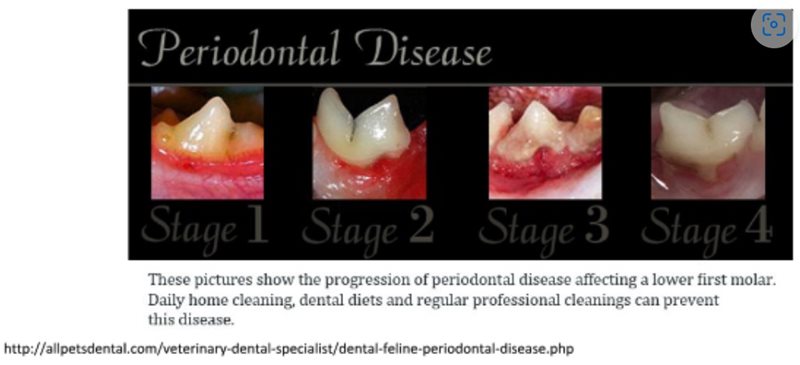We often hear about dental health in our pets, but what does that mean and how do we maintain it the best we can?
What does dental disease mean for my pet?
An unhealthy mouth can lead to an unhealthy pet. The bacteria that collects on the teeth absorb into the system via the mucous membranes in the mouth. This can wreak havoc on your pet’s internal organs, contributing to renal, heart and, liver problems. These diseases, once started, are treatable but not curable, and in most cases, can shorten the pet’s lifespan substantially.
A lot of pet owners are concerned about the cost of maintaining a healthy mouth, but honestly, the cost lies in your pet’s overall health. Treating these diseases can be quite costly on their own and often can cost up to, or more than a single dental or general preventative care can cost.
Why does a dental cost so much?
Dental procedures are not always costly. When preventative measures are taken, and dental care is done when we are in stage 1 of dental disease, the cost can be reasonably low. More expensive cases usually include x-rays, extractions, cleaning, and a lot of staff attention and time. A full mouth extraction can take 4 hours each session and is usually done in 2 sessions. That’s an entire work shift for a doctor and technician! This is why veterinarians will often recommend a dental cleaning at stage 1, versus waiting until stage 3 or 4. We want to avoid this, as it is very painful for pets in general.

What are the best preventive measures for dental disease?
This is our golden rule:
Best – Toothbrushing at least once daily, no less than every other day.
Better – A dental diet.
Good – Dental treats, rinses, and water additives.
Does this mean that your pet will never have dental disease if you do all of these things? No.
Just like us, we can brush our teeth three times a day, floss, eat healthily and do everything right, but still end up with a cavity. Some of it is genetic, some of it is the size of the mouth and the number of teeth, there’s no perfect formula. Some dogs can go their entire lives without any significant dental concerns (typically larger breed dogs), and then some dogs could get dental treatment and need another one six months later. What these preventive measures will do is make possible to spread out dental cleanings out as much as possible.
Why can’t you do this without sedation/anesthetic?
You know those painful drills that dentists use in your mouth? The same type of tools are used for animals. Have you ever had a tooth removed with no freezing or sedation? Think about doing that to a dog or cat that doesn’t understand what we are doing, and has very little impulse control. It would be excruciating, traumatizing and dangerous for all involved.
We cannot clean at or under the gum line, which is where the most crucial plaque and calculus lives. If we did ‘anesthesia-free dental cleanings,’ we would miss all of those areas which would mean that you would need a dental again not long after.
We also are not able to do a full exam, x-rays, extract the teeth, do a proper cleaning etc. Essentially, we would be missing something every time we did that and would not be providing the best care possible for your pet.
Why do you want to do full mouth x-rays?
Why does your dentist do full mouth x-rays at least once yearly? To ensure that they are not missing anything under the gum line. We cannot tell what is going on under there without performing x-rays, and this also applies to animals. We have been able to find masses that we didn’t know were there that were very painful. Sometimes this is a hard thing to deal with, but it’s always a good thing to find it sooner rather than later!
So why do we do this? Not to line our pocketbooks, not to torture the pets, but to make all attempts to have them live a longer, healthier, happier, pain-free life!